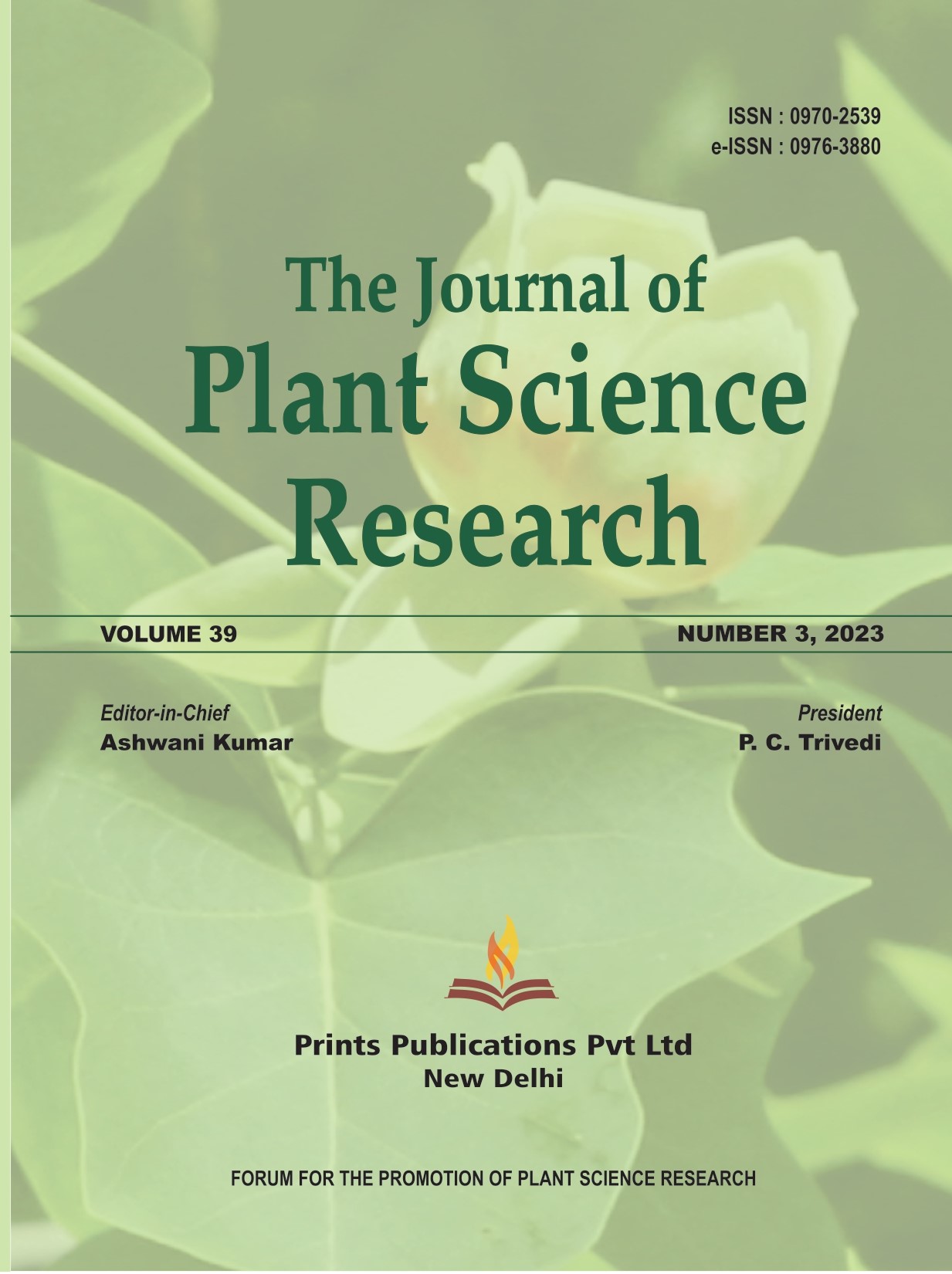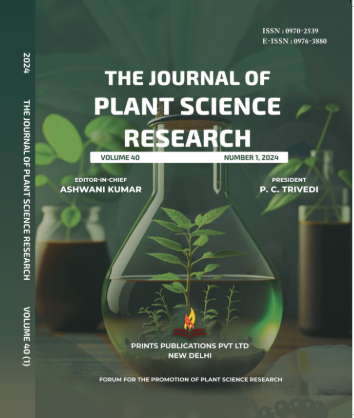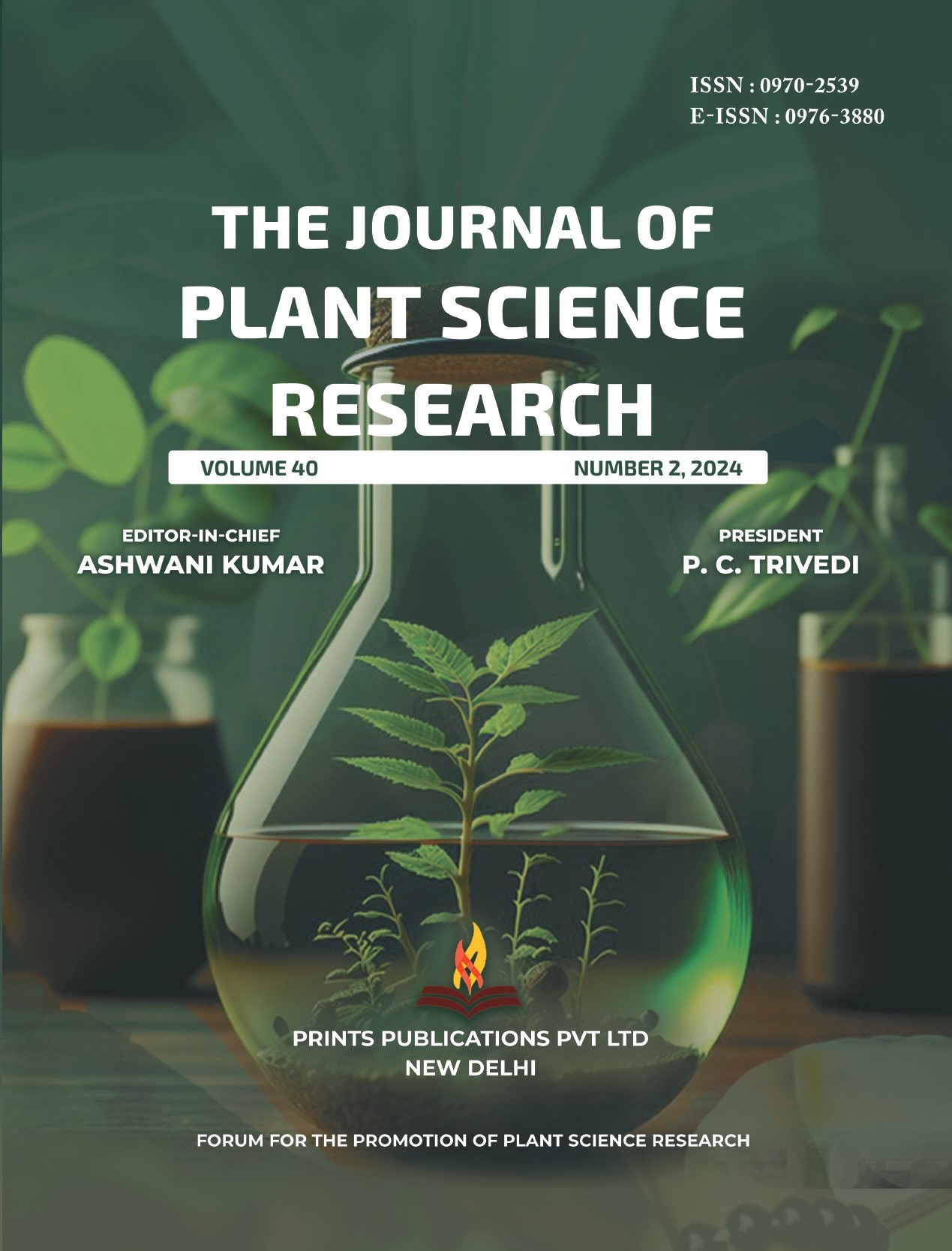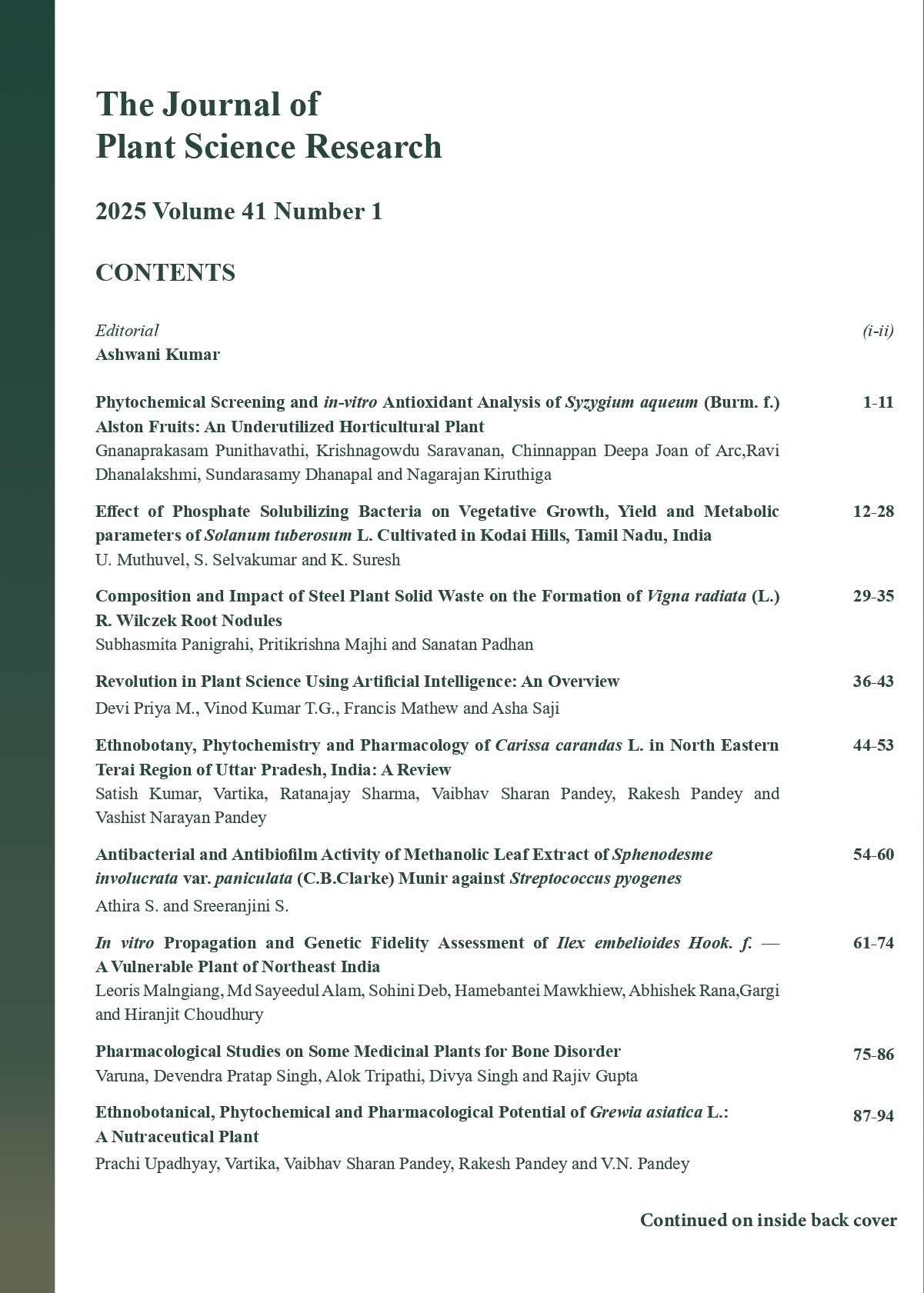The Journal of Plant Science Research - A UGC Care-Listed Journal
Published in Association with Forum For the Promotion of Plant Science Research
Current Volume: 41 (2025 )
ISSN: 0970-2539
e-ISSN: 0976-3880
Periodicity: Tri-annual
Month(s) of Publication: April, August & December
Subject: Botany
DOI: 10.32381/JPSR
Online Access is Free for Life Member
Managing Browning in Plant Tissue Culture: Strategies and Control Measures for Successful In-Vitro Propagation and Secondary Metabolite Production
By : Rajkumari Sanayaima Devi, Pallavi Bala Dhal, Sachchidanand Tripathi
Page No: 346-356
Abstract
The significant issue of managing in-vitro culture browning in plant tissue culture procedures is explored in depth in this review. The complex issue of browning, which includes oxidative, enzymatic, and non-enzymatic browning, poses obstacles to the effectiveness of in vitro culture and has an impact on the quality of secondary metabolites as well as plant viability. Researchers and practitioners encounter this issue in their pursuit of successful plant propagation and valuable secondary metabolite production. The review explores a range of control measures, including antioxidants like ascorbic acid, polyvinylpyrrolidone (PVP), and potassium citrate, alterations to the culture medium, and the selection of suitable culture vessels. These techniques provide a comprehensive method for controlling browning and getting good results in plant tissue culture. The knowledge gathered from this research advances the industry and promotes sustainability since plant tissue culture is still essential for creating disease-free plants, quickly proliferating uncommon genotypes, and synthesizing useful plant-derived compounds. Whether enhancing crop traits or cultivating plants with economically significant products, effective control of culture browning remains a key factor in achieving these goals. In conclusion, this review advances our understanding of the multifaceted challenge of culture browning in plant tissue culture and provides actionable solutions to address this issue. By implementing these measures, researchers and practitioners can enhance the outcomes of plant tissue culture, maximize the yield of valuable products, and contribute to the growth and sustainability of agriculture and industry.
Authors:
Rajkumari Sanayaima Devi : Department of Botany, Deen Dayal Upadhyaya College, University of Delhi, New Delhi, India.
Pallavi Bala Dhal : Department of Botany, University of Delhi, Delhi, India
Sachchidanand Tripathi : Department of Botany, Deen Dayal Upadhyaya College, University of Delhi, New Delhi, India.
DOI: https://doi.org/10.32381/JPSR.2024.40.02.16






